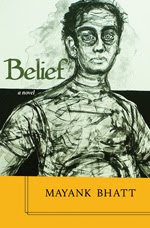That tea’s origins are in South China and not in India is really not all that material because Indian tea – chai – is uniquely Indian.
No tea in the world is like chai.
And a true connoisseur knows that chai has innumerable variations in the Indian subcontinent – right from the Kashmiri kahwa to the chiliya ki chai of restaurants in Bombay’s Muslim bastis (chiliya is a Gujarati Muslim community).
Moreover, every region has many minor and major differences in the making of the concoction that affects its taste.
The amazing thing about chai is the various memories that get associated with the process that is nothing more than consuming tea.
My earliest memories of having chai are with my grandmother in the narrow kitchen and living room of our two-room tenement (chawl). I was to have milk and she’d have tea, and every day I’d argue that I wanted tea, too. And she’d promise that I’d have it when I was a grownup. I’d insist and she’d then pour a bit into my milk glass.
I also remember the tea I had at my aunt’s home. It’d green tea, mint, ginger, and just a few drops of milk in the tea. It was potent and invigorating.
Everyone who’s lived in Bombay knows the pleasures of having a cutting chai in a small glass especially during the monsoon, and if you also managed to get a vada pao with it, that was the nearest you could get to heaven without dying.
During my years in college, I hung around a teashop nearby owned by a senior citizen known to the world only by his surname – Dubey – who made tea that nobody else in the world could. His popularity and fame were such that it was impossible on occasions to find a place in the teashop that was at best unhygienic. A young lad came and periodically wiped the tables with a wet cloth and every time he did that more flies hovered around the sticky tabletop.
I remember going to buy the tea leaves, my grandmother instructed me to always buy mamri cha (black tea prepared by the traditional crush tear curl – CTC – process). Yes, there was branded tea those days, as now, but we were sort of poor then to afford branded tea.
During my years in journalism, tea became an addiction, and like many of my colleagues, it was normal to consume more than a dozen cups (glass) of tea all day and Old Monk rum with Coke in evening every day. And, of course, smoke a pack of 20 cigarettes daily. Remember this little personal factoid when you wonder why I died at a relatively young age.
The first time I had Earl Grey tea was appropriately in England and since then, I’ve been hooked to it. Another memory of tea is when I interviewed the Chinese consul in Bombay for a report in Business India. Apparently, it is customary to keep serving tea to a guest if the guest empties the small porcelain teacup. I was unaware of that and must’ve easily consumed a few litres of tea before I left the consulate at Worli.
One of the most surprising discoveries I made about the shared heritage between China and India was on the streets of Shanghai when I along with my former colleague and friend Tushar Pania, who’s now a bigshot in India’s Reliance Industries.
It was rather late in the night, but the streets of the city were still fairly busy. We came across a man selling all sorts of drinks (non-alcoholic). We decided to buy something to drink and picked a bottle. The man didn’t know a word of English and we didn’t know a word of Mandarin. By frantic hand gestures, we managed to ask him what the drink was, and he shouted “cha”.
We took that to mean something in Mandarin, paid him and took a swig from the bottle. It turned out exactly what he said it was – “cha” (tea). Apparently, tea is called cha in Mandarin, too (please confirm Mandarin speakers), as it is in Gujarati.
The last time I met Tushar earlier this year, we had cutting chai on the street outside his office building in Bombay’s Nariman Point – again made in the most unhygienic conditions imaginable, but unbeatable in flavour and aroma.
In Canada, I’ve been exposed to teas from across the world. I’d no idea that there were so many different tea producing regions in the world. Tea is big business, and there are many branded tea franchises in the business who offer a wide variety of tea.
Continued in the post below




No comments:
Post a Comment